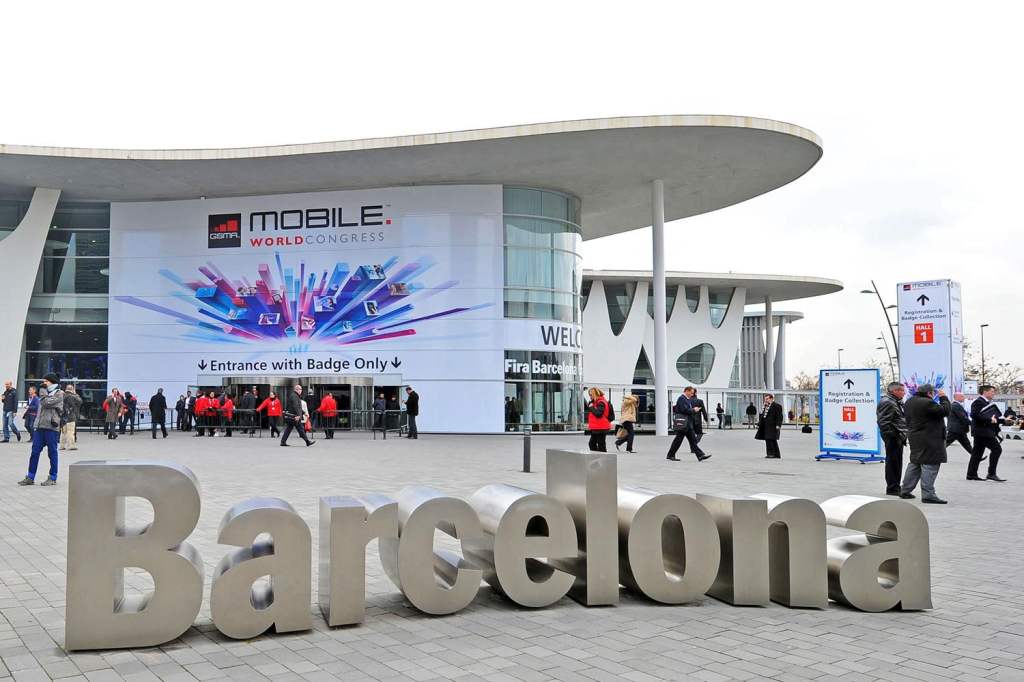Barcelona was again the epicenter of mobile tech last week when some 100,000 visitors attended the 2019 Mobile World Congress at the Fira Barcelona exhibition center. Foldable phones and 5G capability grabbed the spotlight, flanked by new multimedia applications and car updates. 5G foldable phones Two major smartphone brands presented headline devices: Huawei and Samsung. The Chinese manufacturer showcased the Huawei Mate X, a 6.6-inch device when used as a phone that expands in to an 8-inch tablet-like device. Despite its popularity, it comes with a sky-high price and will retail for $2,600 when it launches later this year. Mate X feeds off the company’s Kirin 980 processor and is 5G-compatible thanks to its multi-mode modem Balong 5000, marketed as the first chipset that supports Vehicle to Everything communications, providing low-latency and highly reliable solutions for connected vehicles. Additionally, the Mate X has backwards compatibility with 4G and 3G networks. The internal storage provides 512GB, expandable by up to 256GB through the card slot. Mate X is equipped with a massive 4,500mAh battery, which will get the phone charged up to 85 percent in just 30 minutes. Considering that 5G will consume more power than 4G, the boost in power will be more important than an upgrade. The device will include a three-camera array for the rear camera with 40, 16 and 8 megapixels, and one for the front camera. The foldable display is made of plastic, which brings some novelty to photographers. The setup means subjects will get a live preview of photos as they are being taken. A potential issue is the fact that Mate X wears its large screen on the exterior of the device, unprotected. Even though Huawei claims the hinge and the screen are durable, and that a special protector will keep scratches off the screen, skeptics will need convincing. Samsung’s Galaxy Fold is wrapped in mystery (and kept inside a glass case). The $2,000 device was introduced in London during the company’s Unpacked event, where nobody was allowed to touch it. Tech fans hoped that the MWC environment will enable them to get closer to it and maybe get their hands on the shiny device. But Samsung’s protectiveness remained the same, which led critics to project that perhaps Samsung rushed the launch of this revolutionary concept. Samsung’s foldable smartphone has a 4.6-inch HD+ Super AMOLED display which turns it into a 7.3-inch tablet. It is powered by a 4,380mAh battery—needed for the 5G network—also with fast charging capability. Galaxy Fold packs 12GB of RAM and a Qualcomm 855 processor and internal storage of 512GB, which cannot be expanded. Galaxy Fold sports six cameras—three on the rear, one with 16 megapixels and two with 12 megapixels, a 10-megapixel selfie camera on the front and two above the 7.3-inch display inside the fold with 10 and 8 megapixels. When folded, the device looks chunky, perhaps a better fit for a shoulder bag than a pocket. This leads to one big question: do these foldable phones really give us the best of both worlds? Are these devices innovative enough to make people want to spend thousands for a convertible phone? Or will consumers continue to purchase two devices for communicating and in-depth reading and browsing? Mobility, AR, AI Tech giant Hewlett Packard and automotive supplier Continental have partnered in the development of a new platform for sharing vehicle data. Built with blockchain technology to attest data security and transparency, the application will help OEMs and other automotive players trade better and monetize their data, in addition to differentiating their brands. HERE Technologies and Volvo have also partnered. HERE will provide map data for off-board cloud services that provides the location of cars and other geographical info. Volvo is developing these services in its own cloud environment and plans to deploy them to enhance the driver experience. Microsoft released Hololens 2, a gadget designed for commercial clients...
Focus on Asia
New Real Estate Tech Era
Reliance on spreadsheets and manual processes in Asia will likely fade as investors and technology providers lay the groundwork for sweeping modernization, according to a recent survey of technology adoption in the region’s real estate industry. Yardi sponsored the survey and subsequent report on current and anticipated technology applications by real estate investment firms, developers and service providers in Asia. Chinese real estate business intelligence source Mingtiandi completed the survey and report, which describes the region’s real estate’s current technology adoption as “firmly in the PC age,” with “significant reliance on manual methods for collecting and storing data” that makes it “slow to make the jump to database-enabled online solutions that can respond to marketing, analysis and property management challenges.” While companies have some systems in place, “the majority [of respondents] still see the Asian region in general, and the real estate industry specifically, as lagging world trends.” Key findings from the survey, the majority of whose respondents work in China, Hong Kong and Singapore: More than 55% of respondents perceive Asia as trailing the West in the adoption of technology within the real estate industry; less than 12% saw the region as the leader Almost 77% regard real estate as trailing other industries in technology adoption; less than 6% regard property companies as leaders More than 83% consider access to information a competitive necessity More than 42% manage leasing, sales and property management on spreadsheets 43% identify internal resistance to change as the single largest barrier to adopting online tools for improving workflows and streamlining operations Asked to identify their priorities, more than half of respondents want better information on deal-related data. Forty-two percent listed access to leasing information and more than 35% identified better access to client contact information. ‘The results of...
Tech at Work
Realcomm Webinar Recap
By 2025, 75 percent of the workforce will be comprised of workers from the Millennial generation. A Thursday webinar hosted by Realcomm: “Technology in the Workplace – Managing the Needs of Multiple Generations” focused on managing that transition successfully and effectively for team members of every generation. Realcomm CEO Jim Young was the moderator. Panelists included: Esther Bonardi, VP of Marketing, Yardi Porschia Parker, Founder, Millennial Performance Institute Shalaya Shipman, Sr. Manager, Operations, SalesForce Kevin Able, President, REALTY|Share Elizabeth Dukes, CMO and Co-Founder, iOffice John Spindler, VP Marketing and Product Management, Zinwave The panelists covered a variety of topics relevant to the escalating generational workforce shift, among them work ideology, preferred methods of recognition, communication platforms and technological expectations. Esther Bonardi, vice president, marketing for Yardi, focused her comments on differentiating the workplace personalities of the Millennials and the Baby Boomers and facilitating constructive communication between the two groups. “I would say to the older generation – reach out and let the younger generation teach you something. Let them know you are willing to learn from them and see what they have to bring to the table. This process starts with the older generation opening up and saying: you mentor me and I’ll mentor you. Let’s teach each other,” Bonardi said. The best way to start such a conversation? Find a neutral subject of interest to both groups, like giving back to the community as a company. “If you’re looking for a place to have these groups where people can exchange information, you might consider corporate social responsibility,” Bonardi suggested. Coming together for the greater good is always a unifying experience that can create professional bonds. Yardi’s workforce in North America is made up of nearly 50 percent Millennial employees, she shared. That has...



